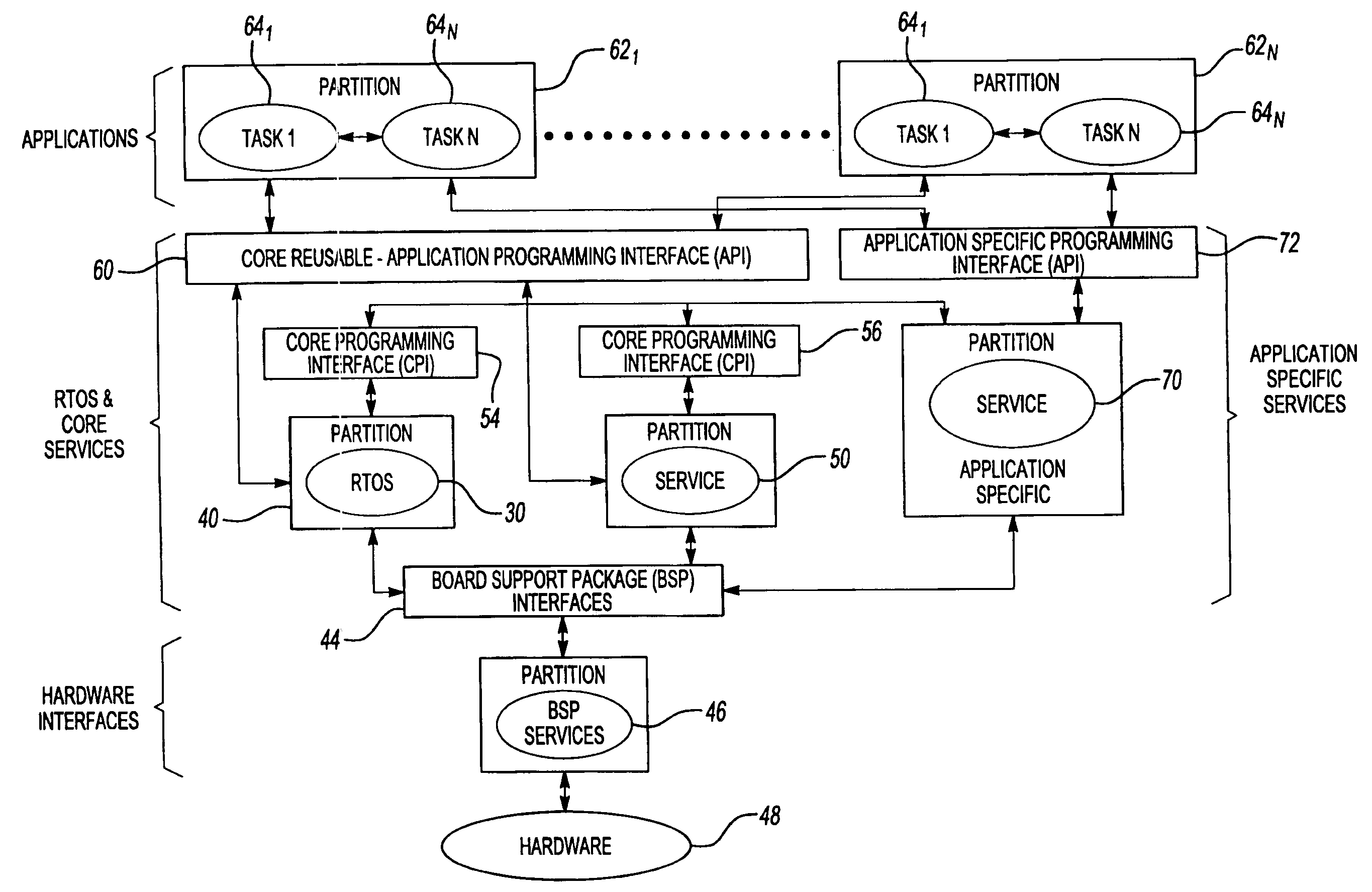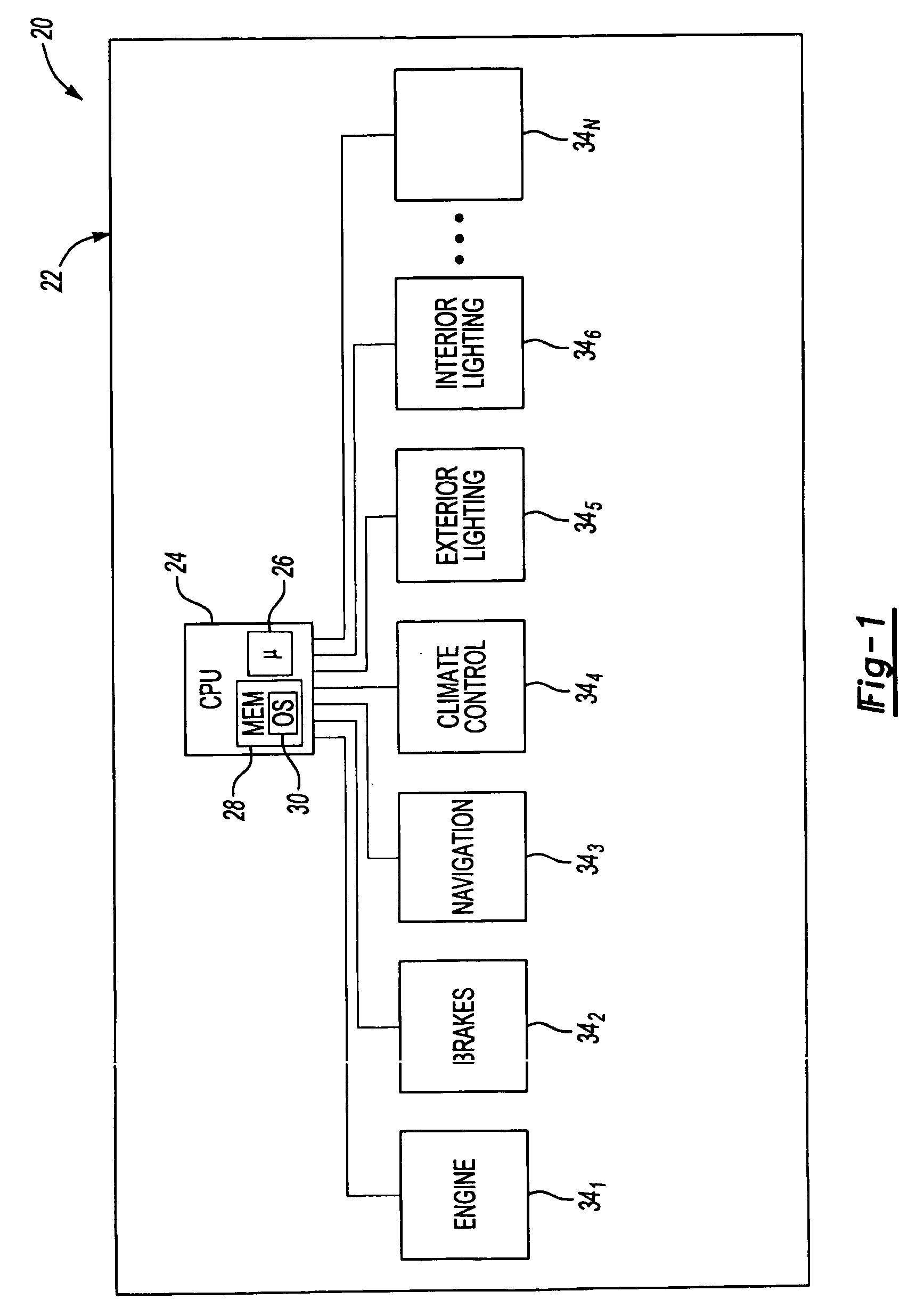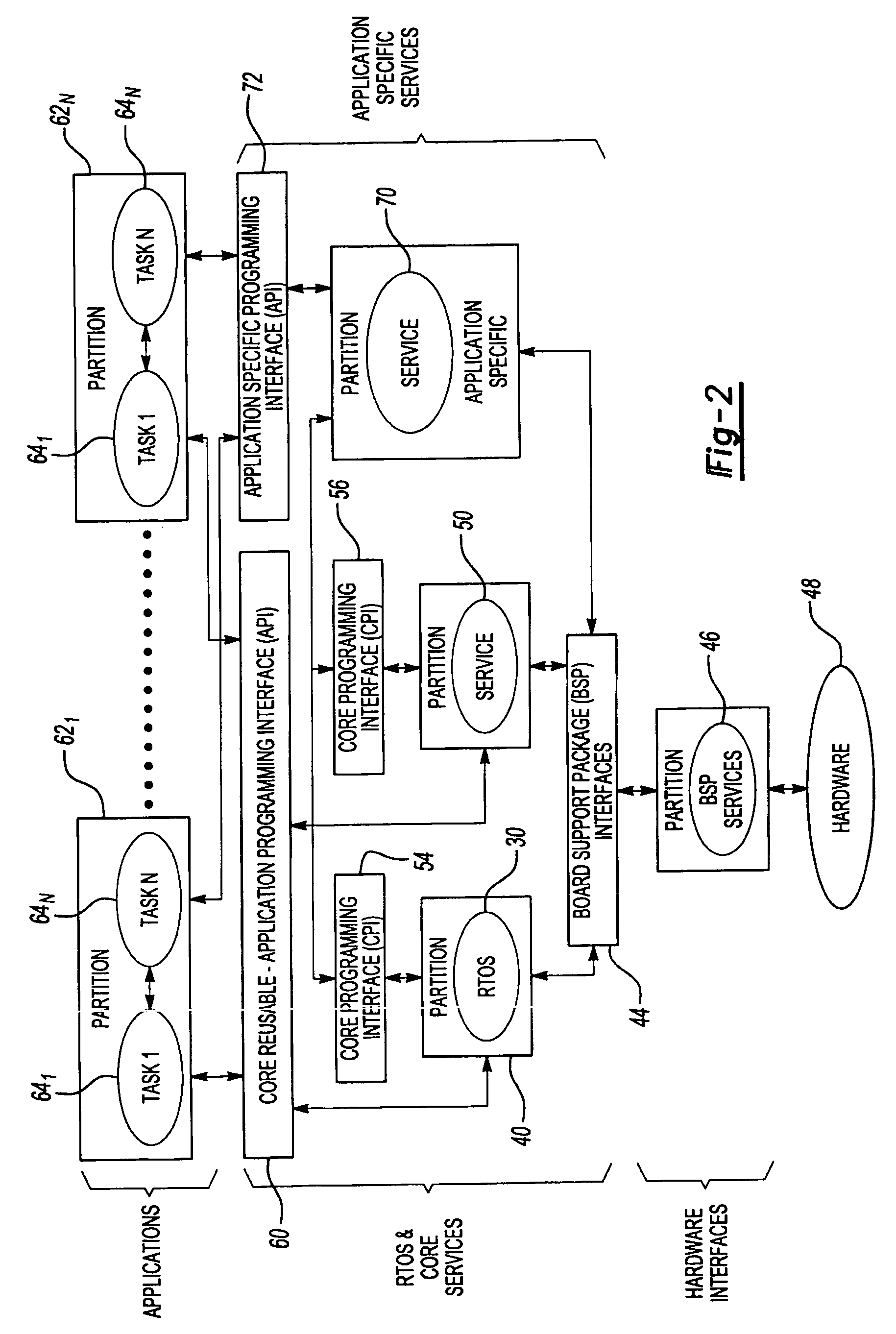Operating system and architecture for embedded system
a technology of operating system and embedded system, applied in the direction of program control, multi-programming arrangement, instruments, etc., can solve the problems of underlying system hardware, no concept of restricted use or protected services or restricted interfaces in the standard, and high cost associated with the production of these products
- Summary
- Abstract
- Description
- Claims
- Application Information
AI Technical Summary
Benefits of technology
Problems solved by technology
Method used
Image
Examples
Embodiment Construction
[0042]FIG. 1 schematically illustrates a control system 20 installed and in use in an aircraft 22. The control system 20 includes a CPU having a processor 26 and memory 28 storing an operating system 30 and other software for controlling the functions of the aircraft 22, including the engine 341, brakes 342, navigation 343, climate control 344, exterior lighting 345, interior lighting 346 and other functions (up to function 34N). The memory 28 could be RAM, ROM and may be supplemented by a hard drive or any other electronic, magnetic, optical or any other computer readable media.
[0043]FIG. 2 schematically illustrates the architecture of the control system of FIG. 1. The operating system 30 is within its own partition 40 and communicates with board support package (BSP) interfaces 44, which communicates with BSP services 46, for interfacing with hardware 48. Core support services 50 (one shown), each in its own partition, also communicate with the BSP interfaces 44. The operating sy...
PUM
 Login to View More
Login to View More Abstract
Description
Claims
Application Information
 Login to View More
Login to View More - R&D
- Intellectual Property
- Life Sciences
- Materials
- Tech Scout
- Unparalleled Data Quality
- Higher Quality Content
- 60% Fewer Hallucinations
Browse by: Latest US Patents, China's latest patents, Technical Efficacy Thesaurus, Application Domain, Technology Topic, Popular Technical Reports.
© 2025 PatSnap. All rights reserved.Legal|Privacy policy|Modern Slavery Act Transparency Statement|Sitemap|About US| Contact US: help@patsnap.com



